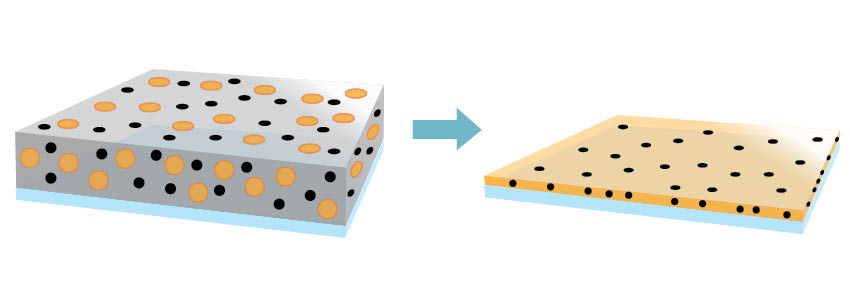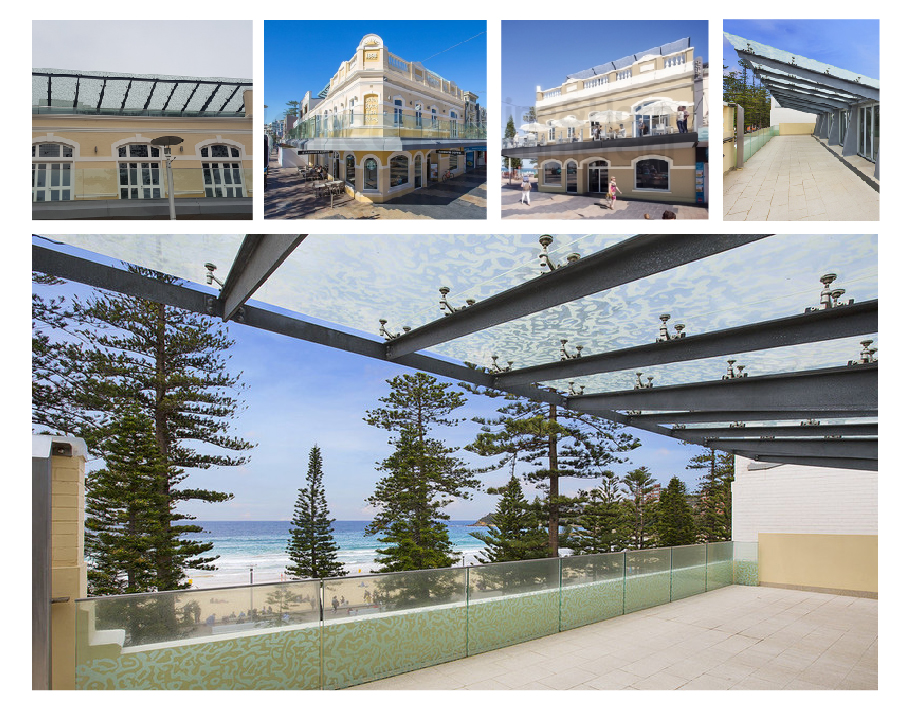|
Outstanding functional performance
Digital in-glass printing meets functional performance requirements. It enables control of all special elements of architectural and designed glass: translucency/opacity, light diffusion and transmission, energy efficiency, privacy levels, slip resistance.
Design freedom and functionality control
The latest innovations in glass printing technology open new opportunities to combine boundless creativity with highly control functionality. Full expression of vision and outstanding budget-smart performance delivery are now possible with digital ceramic in-glass printing.
- Easy implementation of any pattern or design, with unlimited colours, and high resolution for fine details.
- Durability and accuracy
Our printer uses ceramic ink which after tempering becomes fused into the glass, providing unmatched resistance to scratching, acid, UV light and weather. Image shows printed glass and the fusion of glass frit in the fired ink layer after tempering.

Precise micro-drop printing allows accurate photorealistic and graphic designs creating a new medium for espression.
- The ability to combine transparent, translucent and opaque details in any way.
- Full freedom in colours and shades.
- The possibility to create double vision designs for different front and back experiences.
Project feature
Seafoam pattern, Corso, The iconic Ocean Beach Tea Rooms is a restored heritage listed building.
Location: 110 The Corso, Manly. Baxter & Jacobson Architects, DeeWhy Glass.
Project: 6mm Clear tough + 3.04 SGP Interlayer + 6mm clear tough printed
Sustainable Architecture
Printed glass meets environmentally responsible architecture goals:
- The glass is recyclable and offers eco-friendly functionality.
- The printed glass contains no toxic heavy metals.
- Printing a new design on glass panels is well suited to urban renewal projects where redesigning only parts of buildings is preferable to demolition and rebuilding.
- Over time, if elements need to be replaced or added, individual glass panels can be printed and perfectly matched to the existing panels, eliminating the cost and waste of more extensive refurbishment.
Budget-Smart Design
From the initial idea stage, through to the engineering process, as designs change our printed glass technology makes it easy to adapt to changes and get samples printed quickly.
See how architects and designers are taking advantage of printed glass around the world. Visit Dip-Tech where our printed glass technology comes from.
Benefits of Printing
| Scratch resistance |
|
Colour Matching |
| Transportable |
|
Layer Thickness Control |
| Transparency |
|
High Customisation |
| Interior/Exterior Applications |
|
Slip Resistance |
| Ability to Laminate |
|
Etch Inks |
| Information Integration |
|
UV & Humidity Resistance |
| Insulated Glass-Border |
|
Multi-colour Images |
Applications
| Anti-Slip Flooring |
|
Glass Frit Doors |
| Appliances |
|
Interior Dividers |
| Awnings |
|
Kitchen Splashbacks |
| Balustrades & Balconies |
|
Material Imitation |
| Constructions |
|
Office Partitions |
| Curtain Wall |
|
Printed Glass Facades |
| Fritted Glass Canopies |
|
Public Art |
| Furniture |
|
Shower walls and screens |
| Signage |
|
Solar Control Glass |
| Toilets |
|
Windows |
To view more projects with the same printing capabilities, installed globally. visit dip-tech.com

|